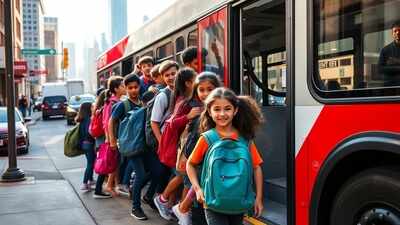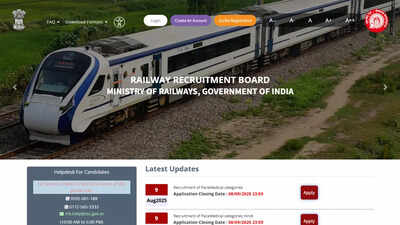Why Cincinnati Public Schools are cutting yellow buses in favor of public transit for over 1,200 students

More than 1,200 Cincinnati Public Schools students will begin riding public transit this school year as the district makes one of the largest busing changes in the US education system this year. The decision shifts seventh- and eighth-grade students from traditional yellow school buses to Cincinnati Metro buses, marking a major change for families, students, and the district’s transportation system.This move is part of a larger effort by the district to address a roughly $50 million budget shortfall caused by decreased government funding. The shift is expected to save the district nearly $3 million annually while expanding the use of Metro buses for student transportation.Cost-saving and efficiency drive the shiftThe Cincinnati Public Schools Board of Education approved the change during a recent business meeting. This adjustment affects about 1,260 students across 13 schools, mostly middle schoolers, according to the district’s Chief Operating Officer Chris Burkhardt, as reported by the Fox19. The move extends a previous decision that allowed many high school students to already use Metro buses, aiming to increase efficiency and reduce costs.Burkhardt explained that yellow bus service costs the district an average of $3,085 per student, while Metro service costs just around $364 per student. “This change will save the district about $2.9 million annually,” he said, as quoted by the Fox19. The district hopes that relying on existing Metro routes instead of running multiple yellow buses will create more sustainable transportation.Addressing student safety concernsDespite concerns about student safety on public buses, Cincinnati Public Schools and Metro have been working closely to ensure a safe environment for students. Some incidents involving teens occurred earlier this year at transit hubs, prompting joint efforts by the district, Metro, Cincinnati police, and the city to increase adult supervision.Fox19 reported that community outreach specialists are now stationed at key transit centers, including Government Square and the Northside Transit Center, during school commute times. Metro spokesperson Brandy Jones said these community ambassadors distribute flyers with job opportunities and other programs to keep students engaged. “It takes a village,” said Burkhardt, emphasizing the collaboration needed to keep students safe and comfortable.Schools and students impacted by the changeThe new transportation plan affects students attending Academy of Multilingual Immersion Studies, Academy of World Languages, Hartwell School, LEAP Academy, Mt. Washington School, Oyler School, Pleasant Hill Academy, Roberts Academy, Roselawn Condon School, Sayler Park School, School for Creative and Performing Arts, South Avondale School, and Spencer Center for Gifted and Exceptional Students.In addition to the middle school students, some high school students at Sayler Park School and Spencer Center will now also use Metro buses. This is part of a broader strategy to allow students to choose schools without requiring the district to run separate yellow buses for small groups.Preparing families for the transitionOfficials encourage parents to familiarize their children with Metro routes before the school year starts. Metro staff members attend school orientation sessions to answer questions and help identify the best routes. According to Fox19, parents can ride the Metro routes free of charge during the first week of school to ease the transition.Brandy Jones from Metro noted that the agency has been providing transportation to students for over 50 years, and experience shows students adapt quickly to public transit. Cameras, security monitors, and occasional police presence help maintain safety, and students are encouraged to report any issues to bus operators immediately.This change reflects Cincinnati Public Schools’ effort to balance fiscal responsibility with student safety and transportation efficiency amid broader challenges facing many US school districts.





